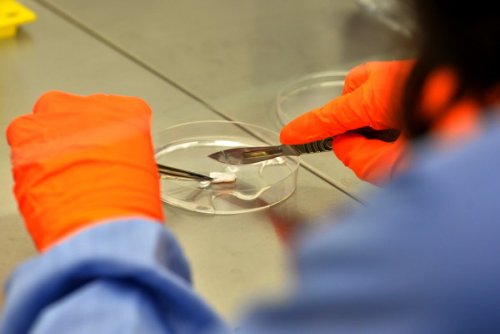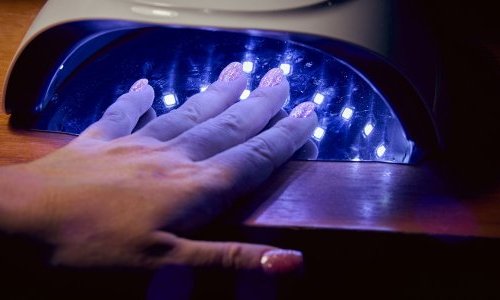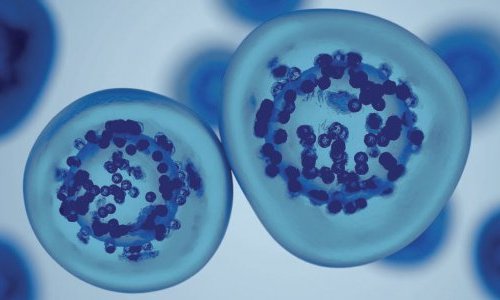"We combine 3D printing technology and cell biology to manufacture biological tissues, layer by layer," summarizes Fabien Guillemot, Founder of biotech firm Poietis, ex-researcher at French Institute of Health and Medical Research (INSERM).

The company aims to validate its first products and market them to research and testing centres by 2017. © AFP Photo / Georges Gobet
Three-dimensional printing of biological tissues, responds to a wide range of major socio-economic challenges:
![]() Reduction of animal testing thanks to in vitro models allowing to evaluate efficacy and toxicity of cosmetic ingredients and active pharmaceutical compounds;
Reduction of animal testing thanks to in vitro models allowing to evaluate efficacy and toxicity of cosmetic ingredients and active pharmaceutical compounds;
![]() Drug discovery by producing predictive disease models;
Drug discovery by producing predictive disease models;
![]() Emergence of personalized medicine by making custom tissues from the patient cells;
Emergence of personalized medicine by making custom tissues from the patient cells;
![]() Regenerative medicine by fabricating custom grafts.
Regenerative medicine by fabricating custom grafts.
According to Poietis, market perspectives associated with bioprinting were recently valued at close to 2 billion euros in 2020.
To date, four bio-printing technologies are available on the market. However, according to its founders, Poeitis (from the Greek “manufacture”) is for now the only company in the world using a laser-assisted technology to "print" living matter.
“Using lasers for bio-printing works a bit like inkjet technology, in the sense that a laser drive creates a spurt of ink, the ink being a sort of cradle for cells. By moving the laser beam, we lay drops of cells at different locations and rebuild 3D structures layer by layer," explains Fabien Guillemot. "With laser technology, we have a resolution of around 20 micrometres (one millionth of a metre), so we can print cells cell by cell and give even more complexity to what we create, and reproduce all the complexity we see in our tissue and our organs."
Computerised skin models
The whole manufacturing process is based on predefined computer models that are inspired from existing living tissues.
These digital models, fully developed by Poietis, allow not only to organize the cells initially but also to anticipate how they will interact in time. Three weeks are required to reproduce the skin.
For now, the company, which has about twenty employees (biologists, optical engineers, IT specialists …), uses two printers developed with INSERM and Alphanov laboratory, a member of the Bordeaux-based competitiveness cluster dedicated lasers. However, the company is already working on developing its own bioprinter, which should be operational within two years.
Cosmetic and pharmaceutical research
As a first step, Poietis aims to develop its business by tapping into the enormous potential of testing in cosmetics and pharmaceutical research. “This is why we first worked on the skin, it is a real opportunity for development,” says Fabien Guillemot, who has just signed a strategic partnership with the global chemical giant, the German group BASF supplier of ingredients for cosmetics.
BASF intends to use the advanced printing resolution of the Poietis’ bioprinting technology to refine its skin model Mimeskin. The laser-assisted bioprinting technology will be used in a first step to allow for automated reproduction of Mimeskin, followed by more advanced models containing additional cell types.
The company, which has just completed a first round of financing of 2.5 million euros (including a record of nearly 1 million euros via the crowdfunding platform WiSEED), aims to validate its first products and market them to research and testing centres by 2017.




























